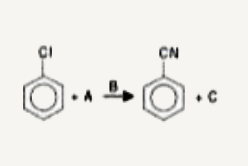Identify intensive property from the following
Enthalpy
Temperature
Volume
Refractive index
To identify the intensive property from the given options, we need to understand the difference between intensive and extensive properties:
1. Intensive Properties: These properties do not depend on the amount of substance or the size of the system. Examples include temperature, pressure, density, and refractive index.
2. Extensive Properties: These properties depend on the amount of substance or the size of the system. Examples include volume, mass, energy, and enthalpy.
Now, let's analyze each option given in the question:
Step 1: Analyze Enthalpy
- Enthalpy is an extensive property because it depends on the amount of substance. For example, if you have 50 grams of water and 100 grams of water, the enthalpy required to vaporize them will be different (it will double when the mass doubles).
Step 2: Analyze Temperature
- Temperature is an intensive property. For instance, if you heat 50 grams and 100 grams of water, both can reach the same temperature (e.g., 100 degrees Celsius) regardless of their mass.
Step 3: Analyze Volume
- Volume is an extensive property. If you increase the size of the container, the volume of gas or liquid will increase proportionally to the amount of substance present.
Step 4: Analyze Refractive Index
- Refractive Index is an intensive property. It is defined as the ratio of the speed of light in a vacuum to the speed of light in a medium, and this ratio does not depend on the amount of substance.
Conclusion
From the analysis, we can conclude:
- Intensive Properties: Temperature and Refractive Index
- Extensive Properties: Enthalpy and Volume
Thus, the intensive properties among the options provided are:
- Temperature (Option 2)
- Refractive Index (Option 4)
Final Answer
The intensive properties from the given options are Temperature and Refractive Index.
---
- Enthalpy is an extensive property because it depends on the amount of substance. For example, if you have 50 grams of water and 100 grams of water, the enthalpy required to vaporize them will be different (it will double when the mass doubles).
- Temperature is an intensive property. For instance, if you heat 50 grams and 100 grams of water, both can reach the same temperature (e.g., 100 degrees Celsius) regardless of their mass.
- Volume is an extensive property. If you increase the size of the container, the volume of gas or liquid will increase proportionally to the amount of substance present.
- Refractive Index is an intensive property. It is defined as the ratio of the speed of light in a vacuum to the speed of light in a medium, and this ratio does not depend on the amount of substance.
From the analysis, we can conclude:
- Intensive Properties: Temperature and Refractive Index
- Extensive Properties: Enthalpy and Volume
- Temperature (Option 2)
- Refractive Index (Option 4)
The intensive properties from the given options are Temperature and Refractive Index.
Topper's Solved these Questions
- THERMODYNAMICSBOOK - CENGAGE CHEMISTRY ENGLISHCHAPTER - THERMODYNAMICSEXERCISE - Exercises (Assertion-Reasoning)
23 Videos
- THERMODYNAMICSBOOK - CENGAGE CHEMISTRY ENGLISHCHAPTER - THERMODYNAMICSEXERCISE - Exercises (Interger)
10 Videos
- THERMODYNAMICSBOOK - CENGAGE CHEMISTRY ENGLISHCHAPTER - THERMODYNAMICSEXERCISE - Multiple correct Answer Type
2 Videos
- STOICHIOMETRYBOOK - CENGAGE CHEMISTRY ENGLISHCHAPTER - STOICHIOMETRYEXERCISE - Archives Subjective
33 Videos
Similar Questions
Knowledge Check
Identify the false statement from the following
AWork-energy theorem is not independent of Newton's second lawBWork-energy theorem holds in all inertial frames.CWork done by friction over a closed path is zero.DWork done is a scalar quantity
Intensive property is :-
View SolutionIdentify from the following.

View SolutionIdentify the anabolic process from the following
View SolutionChoose the intensive property from the options given below
View SolutionIdentify the wrong statement from the following
View SolutionIdentify the correct match from the following
View SolutionWith respect to angiosperms, identify the incorrect pair from the following
View Solution
